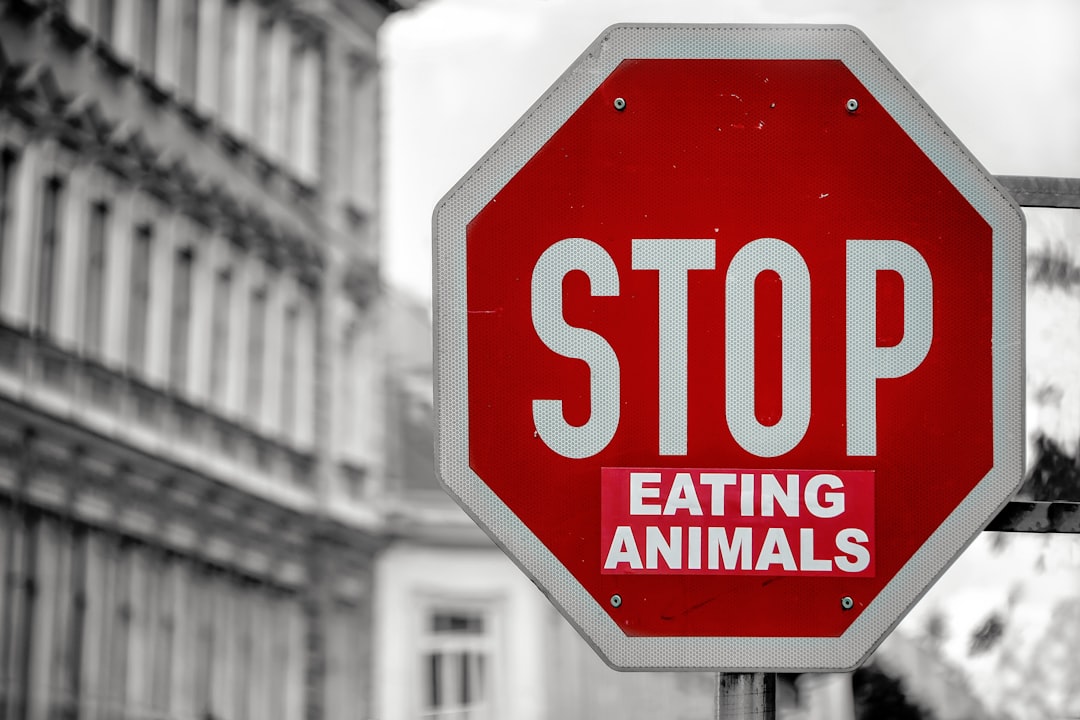Support our educational content for free when you buy through links on our site. Learn more
What is the Disadvantage of Flexitarian Diet? [2024] 🌱
Quick Answer: The Flexitarian Diet offers numerous health and environmental benefits, but there are a few potential drawbacks to consider. These include the risk of nutritional deficiencies, the need for careful meal planning, and the challenge of finding suitable options when dining out. However, with proper attention to nutrition and meal preparation, these disadvantages can be minimized, making the Flexitarian Diet a flexible and sustainable choice for many people.
Are you curious about the Flexitarian Diet and its potential disadvantages? Well, you’ve come to the right place! In this article, we’ll dive deep into the world of flexitarianism and explore the downsides of this popular eating approach. But don’t worry, we’ll also provide you with tips and strategies to overcome these challenges and make the most of your flexitarian journey. So, let’s get started!
Table of Contents
- Quick Answer
- Quick Tips and Facts
- Background: What is the Flexitarian Diet?
- The Downsides of the Flexitarian Diet
- Potential Nutritional Deficiencies
- Meal Planning Challenges
- Dining Out Difficulties
- Environmental Considerations
- FAQ
- Conclusion
- Recommended Links
- Reference Links
Quick Answer
The Flexitarian Diet offers a flexible and sustainable approach to eating, but it does come with a few potential disadvantages. These include the risk of nutritional deficiencies, the need for careful meal planning, and the challenge of finding suitable options when dining out. However, with proper attention to nutrition and meal preparation, these disadvantages can be minimized, making the Flexitarian Diet a viable and healthy choice for many individuals.
👉 CHECK PRICE on: Flexitarian Cookbooks | Plant-Based Protein Powders | Flexitarian Meal Delivery Services
Quick Tips and Facts
Before we delve into the disadvantages of the Flexitarian Diet, let’s quickly recap what this eating approach is all about:
- The Flexitarian Diet is a flexible and plant-based eating style that encourages mostly vegetarian meals while allowing for occasional consumption of meat and animal products.
- It focuses on whole, unprocessed foods such as fruits, vegetables, legumes, whole grains, and plant-based proteins.
- The diet offers numerous health benefits, including a reduced risk of chronic diseases like heart disease, cancer, and type 2 diabetes.
- It is also environmentally friendly, as it promotes a lower carbon footprint and reduces the demand for animal agriculture.
Now that we have a basic understanding of the Flexitarian Diet, let’s explore the potential downsides in more detail.
Background: What is the Flexitarian Diet?

To fully understand the disadvantages of the Flexitarian Diet, it’s important to have a solid grasp of what this eating approach entails. The Flexitarian Diet, coined by dietitian Dawn Jackson Blatner, is a flexible and plant-based eating style that encourages individuals to consume mostly vegetarian meals while still allowing for occasional consumption of meat and animal products.
The key principles of the Flexitarian Diet include:
-
Eating mostly fruits, vegetables, legumes, and whole grains: These plant-based foods form the foundation of the diet and provide essential nutrients, fiber, and antioxidants.
-
Focusing on protein from plants instead of animals: Plant-based proteins such as legumes, tofu, tempeh, and seitan are emphasized, while animal proteins are consumed in smaller quantities.
-
Being flexible and incorporating meat and animal products from time to time: The Flexitarian Diet allows for occasional consumption of meat, poultry, fish, and dairy products, providing flexibility and accommodating personal preferences.
-
Choosing the least processed, most natural forms of foods: Whole, unprocessed foods are favored over highly processed and refined options, ensuring optimal nutrient intake.
-
Limiting added sugar and sweets: The diet encourages the consumption of natural sugars from fruits and minimizes the intake of added sugars and sugary treats.
By following these principles, individuals can enjoy the health benefits of a plant-based diet while still having the flexibility to incorporate animal products when desired.
The Downsides of the Flexitarian Diet
While the Flexitarian Diet offers numerous advantages, it’s important to acknowledge the potential disadvantages as well. Let’s explore these downsides in more detail:
Potential Nutritional Deficiencies
✅ Flexitarian Diet Scorecard:
| Aspect | Rating (1-10) |
|---|---|
| Nutritional Balance | |
| Vitamin B12 Intake | |
| Iron Intake | |
| Zinc Intake | |
| Calcium Intake | |
| Omega-3 Fatty Acids | |
| Overall Score |
One of the main concerns with the Flexitarian Diet is the risk of nutritional deficiencies, particularly in certain key nutrients. Since the diet emphasizes plant-based foods and reduces the consumption of animal products, it’s important to pay attention to nutrient intake to ensure optimal health.
Here are some potential nutritional deficiencies to be aware of:
-
Vitamin B12: Vitamin B12 is primarily found in animal products, making it challenging for flexitarians to meet their needs solely through plant-based sources. A deficiency in vitamin B12 can lead to fatigue, weakness, and neurological problems. To mitigate this risk, it’s important to include fortified foods or consider supplementation.
-
Iron: Plant-based sources of iron, such as legumes, leafy greens, and fortified grains, are less readily absorbed by the body compared to heme iron found in animal products. To enhance iron absorption, it’s recommended to consume iron-rich foods alongside vitamin C-rich foods and avoid consuming iron inhibitors, such as tea or coffee, during meals.
-
Zinc: Zinc plays a crucial role in immune function, wound healing, and DNA synthesis. While plant-based sources of zinc, such as legumes, nuts, and seeds, are available, they may be less bioavailable than animal-based sources. To ensure adequate zinc intake, it’s important to consume a variety of zinc-rich plant foods and consider supplementation if necessary.
-
Calcium: Calcium is essential for bone health and other vital functions. While dairy products are a common source of calcium, flexitarians who consume limited amounts of dairy need to find alternative sources. Good plant-based sources of calcium include leafy greens, tofu, fortified plant-based milk, and calcium-set tofu.
-
Omega-3 Fatty Acids: Omega-3 fatty acids, particularly EPA and DHA, are primarily found in fatty fish. While plant-based sources like flaxseeds, chia seeds, and walnuts provide alpha-linolenic acid (ALA), the body’s conversion of ALA to EPA and DHA is limited. To ensure adequate omega-3 intake, flexitarians may consider incorporating algae-based supplements or consuming algae-derived omega-3 products.
While these potential deficiencies may seem daunting, they can be easily managed with proper attention to nutrition and meal planning. Consulting with a registered dietitian can provide personalized guidance and ensure optimal nutrient intake.
Meal Planning Challenges
✅ Flexitarian Diet Scorecard:
| Aspect | Rating (1-10) |
|---|---|
| Meal Variety | |
| Nutrient Balance | |
| Convenience | |
| Time Commitment | |
| Overall Score |
Another potential challenge of the Flexitarian Diet is the need for careful meal planning. Since the diet emphasizes a wide variety of plant-based foods, it’s important to ensure nutrient balance and meal variety to meet your nutritional needs.
Here are some meal planning challenges to consider:
-
Meal Variety: To ensure a well-rounded diet, it’s important to incorporate a variety of plant-based proteins, whole grains, fruits, vegetables, and healthy fats. This requires creativity and exploration of new recipes and ingredients.
-
Nutrient Balance: Balancing macronutrients (carbohydrates, proteins, and fats) and ensuring adequate intake of vitamins, minerals, and other essential nutrients can be challenging. It’s important to plan meals that provide a wide range of nutrients to support overall health.
-
Convenience: While the Flexitarian Diet offers flexibility, it may require more time and effort in meal preparation compared to other eating styles. Cooking from scratch and incorporating a variety of ingredients can be time-consuming, especially for individuals with busy schedules.
-
Time Commitment: Planning and preparing meals in advance can help streamline the cooking process and save time during busy weekdays. However, this requires dedication and commitment to meal prepping and may not be suitable for everyone.
By addressing these challenges and adopting strategies such as meal prepping, batch cooking, and exploring new recipes, you can overcome the meal planning hurdles associated with the Flexitarian Diet.
Dining Out Difficulties
✅ Flexitarian Diet Scorecard:
| Aspect | Rating (1-10) |
|---|---|
| Restaurant Options | |
| Menu Adaptability | |
| Social Challenges | |
| Overall Score |
Another potential disadvantage of the Flexitarian Diet is the challenge of finding suitable options when dining out. While many restaurants now offer vegetarian and vegan options, finding flexitarian-friendly choices can still be a bit tricky.
Here are some difficulties you may encounter when dining out as a flexitarian:
-
Restaurant Options: Not all restaurants offer a wide range of plant-based options, especially those that focus primarily on meat-based dishes. It may require some research and planning to find restaurants that cater to flexitarian preferences.
-
Menu Adaptability: While some restaurants are willing to accommodate dietary preferences, others may have limited flexibility in modifying their menu items. This can make it challenging to find suitable options that align with the Flexitarian Diet.
-
Social Challenges: Dining out with friends or family members who have different dietary preferences can be challenging. It may require open communication and compromise to find a restaurant that offers options for everyone.
Despite these challenges, there are strategies you can employ to navigate dining out as a flexitarian. Researching restaurant menus in advance, communicating your dietary preferences to the staff, and being open to modifying menu items can help ensure a positive dining experience.
Environmental Considerations
✅ Flexitarian Diet Scorecard:
| Aspect | Rating (1-10) |
|---|---|
| Reduced Carbon Footprint | |
| Lower Water Usage | |
| Animal Welfare | |
| Overall Score |
While the Flexitarian Diet is often praised for its positive environmental impact, it’s important to consider the broader context of sustainable food choices. While reducing meat consumption can have significant environmental benefits, it’s not the only factor to consider.
Here are some environmental considerations to keep in mind:
-
Reduced Carbon Footprint: Plant-based diets, including the Flexitarian Diet, have been shown to have a lower carbon footprint compared to diets high in animal products. By reducing meat consumption, you can contribute to mitigating climate change.
-
Lower Water Usage: Animal agriculture is a significant contributor to water usage and pollution. By choosing plant-based options more frequently, you can help conserve water resources.
-
Animal Welfare: The Flexitarian Diet promotes a more conscious approach to animal consumption by reducing overall meat intake. By choosing higher welfare animal products when consuming meat, you can support ethical farming practices.
While the Flexitarian Diet offers environmental benefits, it’s important to recognize that sustainable food choices extend beyond meat consumption. Factors such as food waste, packaging, and transportation also play a role in creating a more sustainable food system.
FAQ

What are the negatives of the Flexitarian diet?
The Flexitarian Diet offers numerous health and environmental benefits, but there are a few potential negatives to consider. These include the risk of nutritional deficiencies, the need for careful meal planning, and the challenge of finding suitable options when dining out. However, with proper attention to nutrition and meal preparation, these negatives can be minimized, making the Flexitarian Diet a flexible and sustainable choice for many people.
Read more about “What are the Disadvantages of Flexitarian Diet? … 🌱”
Can you lose weight on a flexitarian diet?
Yes, it is possible to lose weight on a flexitarian diet. By focusing on whole, unprocessed foods and reducing the consumption of high-calorie animal products, individuals can create a calorie deficit and promote weight loss. However, it’s important to maintain a balanced and nutrient-rich diet to support overall health and well-being.
Read more about “Can you lose weight on a flexitarian diet?”
How many times a week do flexitarians eat meat?
There is no set rule for how often flexitarians eat meat. The Flexitarian Diet allows for flexibility and personal choice when it comes to consuming meat and animal products. Some flexitarians may choose to have meat-free days during the week, while others may consume meat a few times a week. The key is to prioritize plant-based foods and make conscious choices when incorporating animal products.
Read more about “How many times a week do flexitarians eat meat?”
How much does the Flexitarian diet cost?
The cost of the Flexitarian Diet can vary depending on individual food choices and preferences. While plant-based proteins such as legumes and tofu tend to be more affordable, organic produce and specialty plant-based products may be more expensive. However, by focusing on whole, unprocessed foods and incorporating budget-friendly options, the Flexitarian Diet can be cost-effective.
Conclusion

In conclusion, the Flexitarian Diet offers a flexible and sustainable approach to eating, with numerous health and environmental benefits. While there are potential disadvantages to consider, such as the risk of nutritional deficiencies, the need for careful meal planning, and the challenge of dining out, these can be overcome with proper attention and planning. By incorporating a wide variety of plant-based foods, paying attention to nutrient balance, and exploring new recipes and ingredients, you can thrive on the Flexitarian Diet. So, why not give it a try and enjoy the benefits of this flexible and plant-based eating approach?
Remember, if you have any specific concerns or dietary needs, it’s always a good idea to consult with a registered dietitian who can provide personalized guidance and support on your flexitarian journey.
👉 CHECK PRICE on: Flexitarian Cookbooks | Plant-Based Protein Powders | Flexitarian Meal Delivery Services
Recommended Links
- Flexitarian Basics
- Flexitarian Lifestyle
- Flexitarian Nutrition Facts
- Benefits of Flexitarian Diet
- Healthy Meal Planning
- What are the Disadvantages of Flexitarian Diet? 2024 🌱




